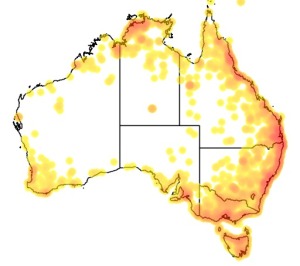Colours
Distinguishing features
It has a relatively short thick neck, sturdy bill, and a hunched posture. The non-breeding adult has mainly white plumage, a yellow bill and greyish-yellow legs. During the breeding season, adults of the nominate western subspecies develop orange-buff plumes on the back, breast and crown, and the bill, legs and irises become bright red for a brief period prior to pairing. The sexes are similar, but the male is marginally larger and has slightly longer breeding plumes than the female; juvenile birds lack coloured plumes and have a black bill. (Wikipedia)
Size
- From 46 cm to 56 cm (Length of specimen)
Wingspan
- From 88 cm to 96 cm
Synonyms
Distribution
Distribution and habitat preferences
It has undergone one of the most rapid and wide reaching natural expansions of any bird species. It was originally native to parts of Southern Spain and Portugal, tropical and subtropical Africa and humid tropical and subtropical Asia.
The massive and rapid expansion of its range is due to its relationship with humans and their domesticated animals. Originally adapted to a commensal relationship with large browsing animals, it was easily able to switch to domesticated cattle and horses. As the keeping of livestock spread throughout the world, the Cattle Egret was able to occupy otherwise empty niches. (Wikipedia)
Diet
It feeds on a wide range of prey, particularly insects, especially grasshoppers, crickets, flies (adults and maggots), and moths, as well as spiders, frogs, and earthworms. It is usually found with cattle and other large grazing and browsing animals, and catches small creatures disturbed by the mammals. Studies have shown that foraging success is much higher when foraging near a large animal than when feeding singly. (Wikipedia)




